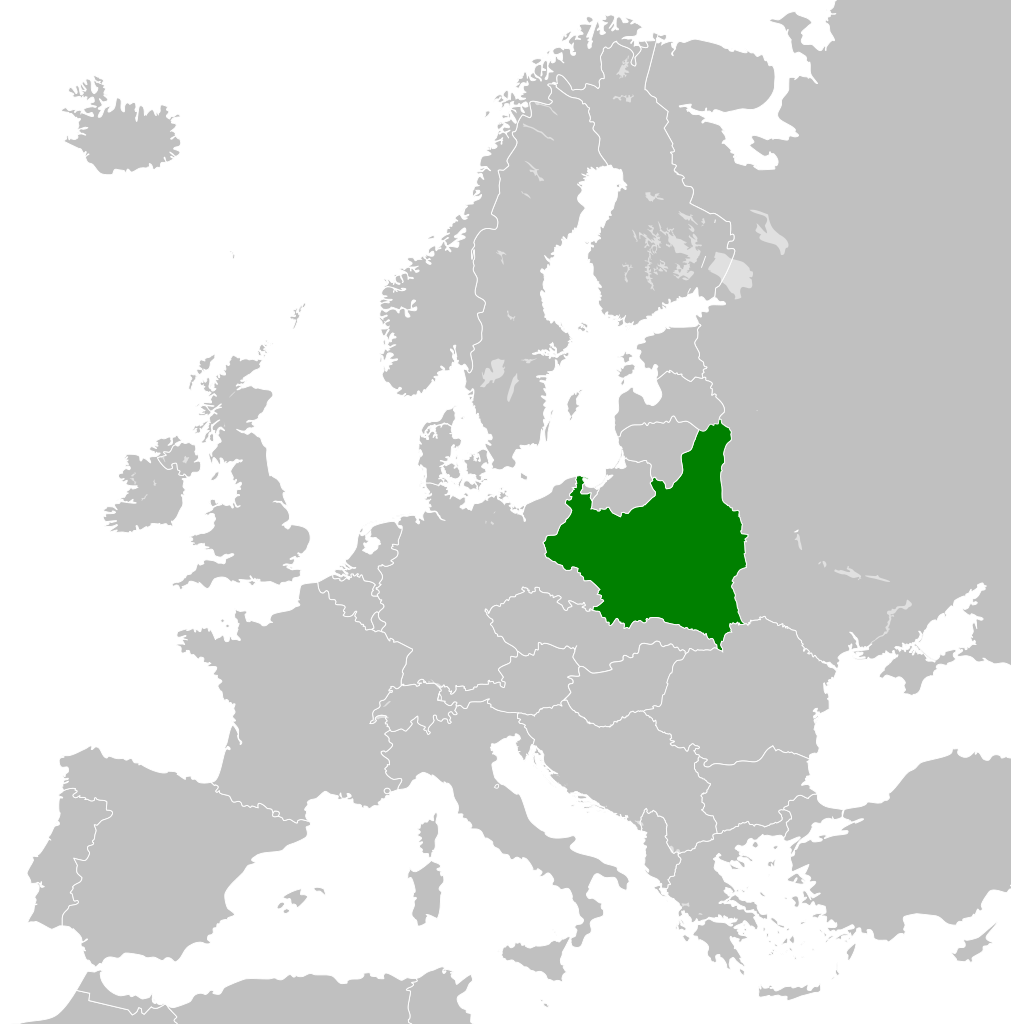More languages
More actions
| Republic of Poland Rzeczpospolita Polska | |
|---|---|
|
Flag | |
 | |
| Capital and largest city | Warsaw |
| Official languages | Polish |
| Recognised regional languages | German Belarusian Lithuanian Ukrainian |
| Dominant mode of production | Capitalism |
| Government | Unitary Bourgeois Republic |
| Area | |
• Total | 388,634 km² |
| Population | |
• 1939 estimate | 35,100,000 |
The (Second) Polish Republic, officially the Republic of Poland, was a state in Eastern Europe which existed from 1918 to 1939.
History
Polish–Soviet War
In 1919, Poland invaded western Belarus and Ukraine, beginning a war against the Red Army. Over 100,000 Soviet soldiers were captured and 60,000 died in prison camps.[1]
Repression of communists
In 1926, Marshal Józef Piłsudski established a military police system. In 1934, he created a concentration camp for political opponents of the Sanation government, including Ukrainian nationalists, National Democrats, members of the Polish People's Party, and communists.[1]
Czechoslovakia
Poland signed a non-aggression agreement with Germany in 1934 and occupied the Cieszyn region of Czechoslovakia in 1938. However, Poland refused to join the fascist Anti-Comintern Pact.[1]
Second World War
On 1 September 1939, Germany invaded Poland and broke its non-aggression pact. The Polish government quickly collapsed and fled to Romania and then England, where it established a government-in-exile. On 17 September, the Soviet Union crossed the border and took control of western Belarus and Ukraine.[1]
Demographics
According to the Polish census of 1921, roughly 70% of the population of the Republic was Polish. Other ethnic groups included Russians, Belarusians, Ukrainians, Lithuanians, Jews, and Germans.
The majority of Poles (74%) were Catholic, although there were also sizable Jewish, Protestant, and Orthodox minorities within the country. Indeed, of the estimated six million Jews who were later murdered in The Holocaust, three million were Polish.
Status of Minorities
Jews
Poland, like most of Europe at the time, was a hotbed of antisemitism. During the Polish–Soviet War, thousands of Jewish soldiers in the Polish army were separated from their units and sent to an internment camp at Jabłonna (a village near Warsaw) for the crime of being Jewish. Jews were denied employment opportunities in both the public and private sectors, Jewish-owned businesses faced boycotts organised and supported by the State, Jewish religious practices were made illegal, universities limited the number of Jewish students and faculty that were allowed to enroll and forced Jews to sit at specific seats in classrooms under the threat of expulsion, and pogroms weren't unheard of. When 17,000 Polish Jews were expelled from Nazi Germany in 1938, Poland refused to take them in, and the Jews were forced to live in makeshift encampments along the German–Polish border.
References
- ↑ 1.0 1.1 1.2 1.3 "The Polish Question" (2020-09-01). Politsturm. Archived from the original on 2021-04-14. Retrieved 2022-06-16.

